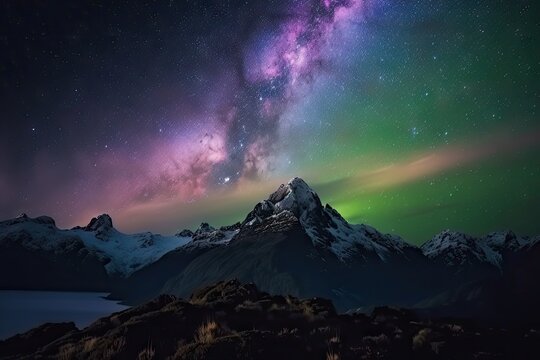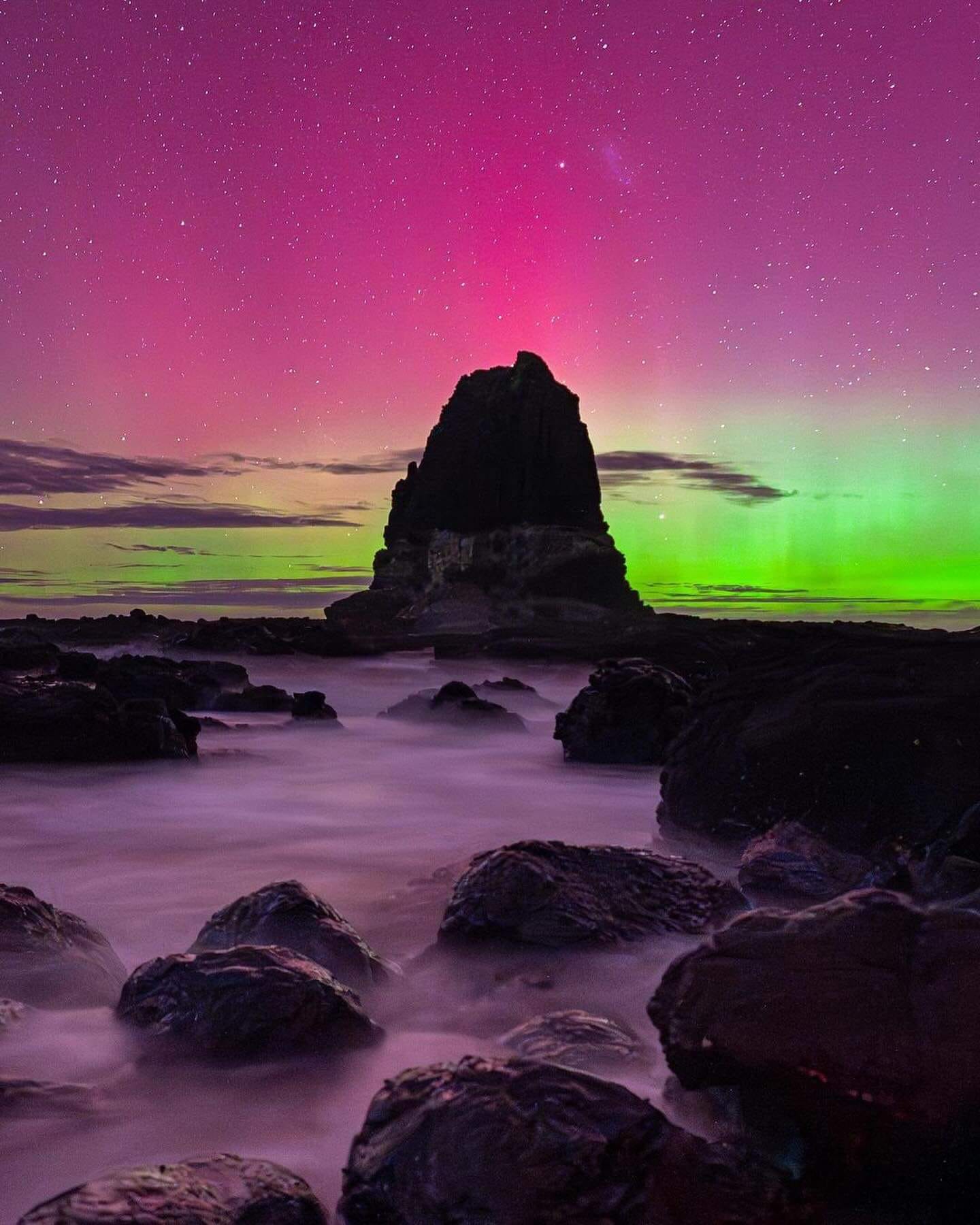Aurora Sweeps Across the Globe

A Crescendo of Solar Activity
Solar flares, observed by NASA satellites last weekend, depict a raging storm on the surface of the Sun. The Sun is currently near the maximum of its natural 11-year magnetic field cycle, becoming increasingly chaotic, tangled and twisted, resulting in the release of a lot of explosive energy. Over the past week, a large cluster of sunspots, estimated to be 15 times wider than Earth popped up and began producing solar flares.
Solar storms aren’t dangerous to people on Earth’s surface, but can cause some disruption to electronic devices, including satellites orbiting our planet. The geomagnetic storm reached Earth Friday evening as an “extreme” G5, according to the NOAA’s Space Weather Prediction Center. Geomagnetic storms are ranked from G1 to G5.

An aurora occurs when the sun’s charged particles make their way through the Earth’s magnetic field.
What is a Solar Storm?
Solar storms occur when a continuous flow of charged particles from the sun are blasted out into space, eventually hitting Earth. Called ‘space weather’, this is completely normal and during periods of high solar activity, Earth experiences increased impact, which is often referred to as a solar storm. Without Earth’s magnetic field to protect us, our atmosphere would have been lost to space long ago. Those colors in the sky are nature reminding us that we’re very lucky to be here amidst the chaos of space.

Most of the planets in the Solar System, some natural satellites, brown dwarfs and even comets also host auroras.
Photographers and Amateurs Worldwide Were Quick to Capture the Stunning Show of Colors
Striking hues of blue, green, pink, red and yellow have transformed the world’s skies over the past three days. The phenomenon, known as aurora australis in the southern hemisphere, and aurora borealis in the northern hemisphere, was triggered by the first extreme geomagnetic storm we’ve seen in 20 years. From Friday to Sunday, the world got to witness the most spectacular show of northern and southern lights many have never seen. Globally, the aurora was seen in previously unheard of places such as northern Italy and the US state of Mississippi.

NOAA’s Space Weather Prediction Center prediction map.
Southern lights are normally viewed from high southern latitudes in Antarctica, South Africa, Australia and New Zealand, but were also seen this weekend in Latin America, where people in Chile and Argentina witnessed dazzling displays of red and magenta. The northern lights are visible from areas around the Arctic, such as Alaska, Canada, Iceland, Greenland, Norway, Sweden, Finland, Scotland and Siberia, but this incredible show delighted viewers from Switzerland, Poland, Spain and Germany, and through to the USA in Washington, California, Alabama, Colorado, Missouri, Virginia, Maine and Oregon. The UK and Asia were also lucky enough to see the aurora.

The term aurora borealis was coined by Galileo in 1619, from the Roman Aurora, goddess of the dawn and the Greek name for the north wind (Boreas).
Aurora could still be viewable Monday, but will likely not match this weekend’s international performance. The storms will likely dissipate on Tuesday after the aurora rotates away from Earth.





